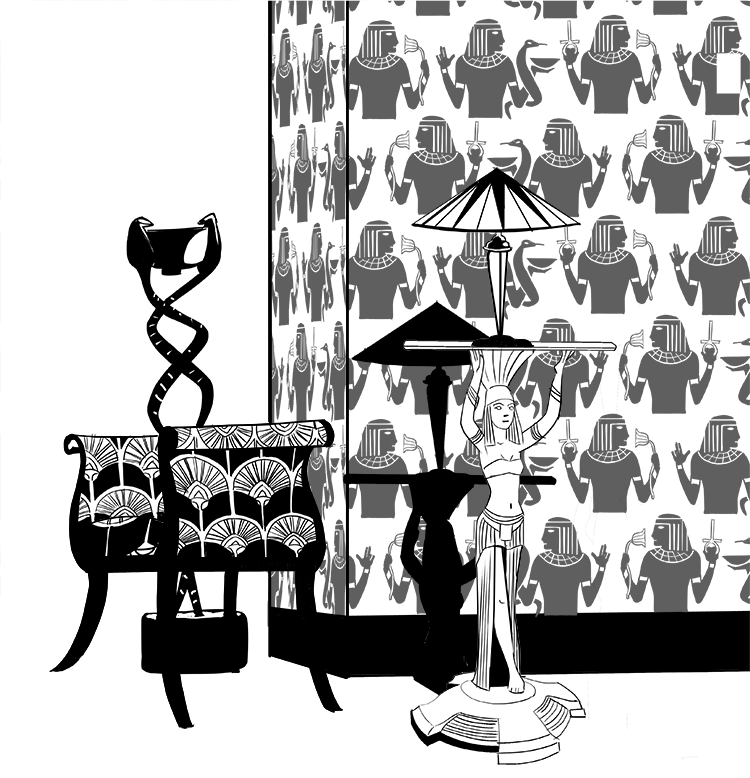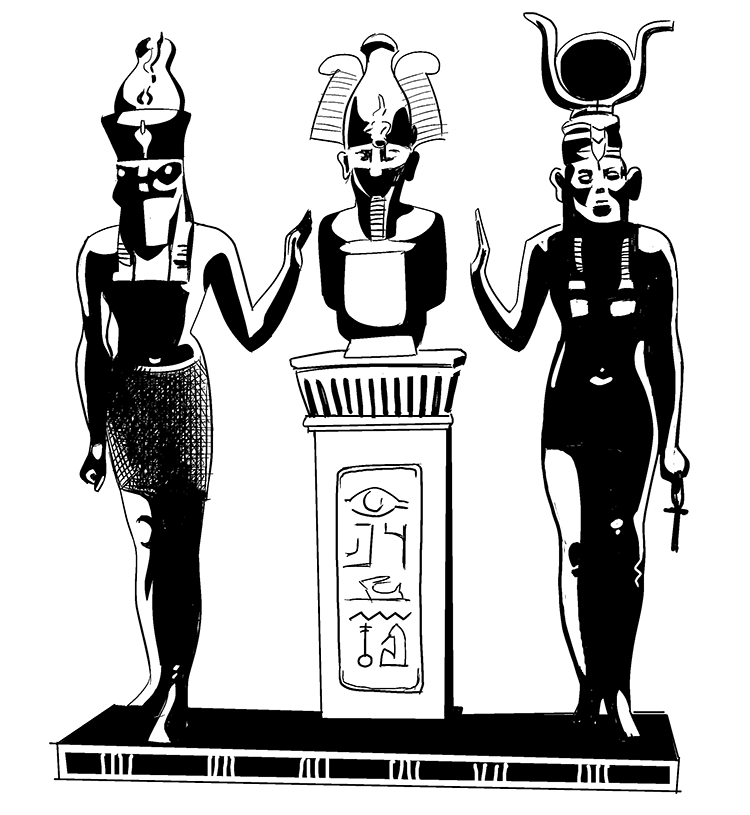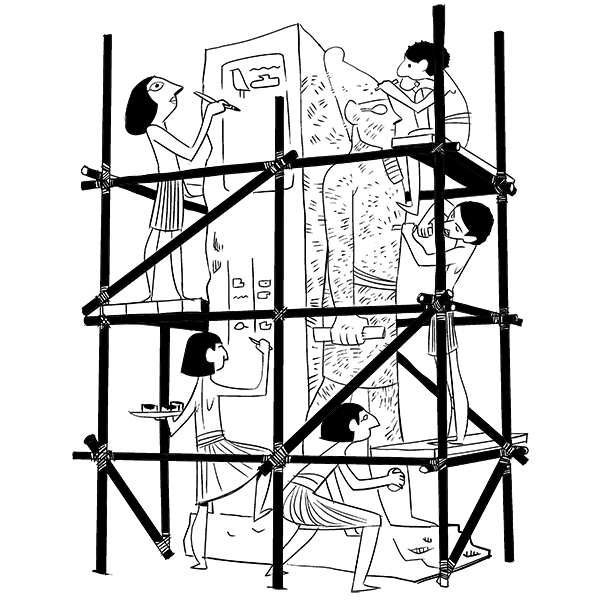As a society flourishes, so too does its ability to create. Success in either agriculture or industry makes it so that talented people can dedicate time to their crafts, giving rise to a culture of arts.
Such a phenomenon did take place in ancient Egypt, though their understanding of art was much different than ours is today.
The main difference? Egyptian art wasn’t always made to be seen. In modern times, we think of art as something to look at or engage with. It exists, often, simply because it exists.
In Ancient Egypt, however, art was created to help carry out some other function, such as worshipping a god or securing a good place in the afterlife.
But while making art may not have been the primary purpose behind creation in ancient Egypt, their work has inspired multiple millennia of artists. Whether it’s the pyramids, the Sphinx, the Ankh, or an Egyptian headdress, elements of Egyptian art are still influencing us today.
Not bad for a society that existed more than two thousand years ago, no?

What Did the Egyptians Create?
One common example of Egyptian art was pottery, which would get painted with religious imagery, such as the picture of a particular god. Small statues and other idols were also popular items.
In the case of statues, these were often created for religious ceremonies and offerings. Because of this, they were often only carved in the front. No one ever saw the back, so they figured, “why bother?”
This speaks to the functionality of Egyptian art. Those of us living today might look at that statue and critique it for being “unfinished,” but to the Egyptians, it was perfect.
Those who did make their living as artists would be asked to go work on a temple, tomb, or other significant building. There they could assist in creating relief sculptures, carving statues, or perhaps even painting walls.
Another big ticket item for Egyptian artists was jewelry. Throughout its history, Egypt worked to build strong trade relations with other members of the ancient world. Their primary target: precious stones.
Turquoise, for example, was a very popular item for Egyptian jewelry.
Demand for these pieces would have been small, as it was confined to the nobility and other wealthy members of society. Yet this industry produced a great deal of what we consider to be art.
Significance of Art in Ancient Egypt
In modern society, art is often used to make something more beautiful, or to express some aspect of the human condition. But we know this wasn’t what art was to the ancient Egyptians. So, then, what was it? Turns out it was a tool used for expressing religious ideas, consolidating power, and asserting social status.

Triad of Osorkon II
Many a Pharaoh such as Osorkon II in this sculpture represented themselves as the gold Osiris accompanied by the Goddess Isis (his sister and wife) and their son Horus. The representation of the pharaoh as a member of the family of gods was so common that these images and sculptures have a name. they are called triads and many scholars think this representation is in the origin of the holy trinity.
Religion
As with a lot of things in ancient Egypt, religion and politics mixed together to create the conditions for Egyptian art.
To be more specific, the Egyptian pharaoh made his (or her) claim to the throne by establishing their connection to the gods; pharaohs were actually believed to be gods living in human form.
Therefore, it was often necessary for Egyptian pharaohs to have to explain their actions to their people in the language of their religion. And this was often done through drawings and paintings and other works of art.
For example, after King Narmer (Menes – possibly two people but also possibly one) brought Upper and Lower Egypt together, he started telling the story about how the god Horus (from lower Egypt) had killed Set (the rule of Upper Egypt) and this justified his rule.
Examples of this scene are visible in all different types of Egyptian artwork, suggesting this was an important means for distributing royal propaganda, as well as for spreading other religious messages.
Egyptian art and religion mix again at death. The Egyptians believed that life carried on after we’ve left these bodies, and that you could take things with you as you journeyed on to the afterlife. For this reason, pharaohs and other important members of society were buried with great treasures, many of them precious works of art.
Unfortunately, the vast majority of the tombs housing Egyptian kings have been robbed by who knows who — mostly bandits.
Social Standing
The ancient Egyptians may have been very religious, but they were also plenty human. They loved their shiny things, and they got a kick out of showing off their stuff to the people around them.
Therefore, having artwork in Egyptian society, as it still is in many of today’s societies, was seen as a symbol of wealth and status. A noble may have a statue or some other piece commissioned for their home, for example. However, it was often more likely for them to get something made that they could take with them to the grave!

Sculptors at Work, Tomb of Vizier Rekhmire ca. 1479–1425 B.C.
An Unartistic Superpower
Egyptian art is different from how we understand art today. But that doesn’t make it any less significant, and it most certainly does not take away from the contributions the Egyptians have made to overall art history.
So while our modern eyes might look at Egyptian art and dismiss it as “primitive” or “basic,” it was anything but. Instead, it was an expression of what was most important to one of the world’s most powerful ancient cultures.
Written by Matthew Jones
Illustrated by Pablo Velarde Diaz-Pache
